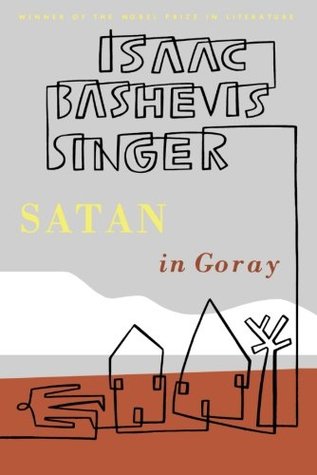Five reviews of contemporary and classical novels from Europe and the Americas were on my review schedule this month three years ago. The Italian novel The City and the House by Natalia Ginzburg from the 1980s follows the correspondence of a nostalgic Italian living in the USA and his kin back home in Rome. In Serpent’s Child by contemporary writer Peter Truschner a typical Austrian childhood and youth come back to life. On the other hand, both the classical English novel South Riding by Winifred Holtby and Satan in Goray by en-NOBEL-ed Isaac Bashevis Singer focus on the inhabitants of a fictional place living hard times in Yorkshire of the 1930s and in Poland of the mid-seventeenth century respectively. The Argentinean historical novel Tierra del Fuego by Sylvia Iparraguirre traces the life of an Indian taken from his native islands to live in England among “civilised” people.
Read more »
- - - - -
First released in 1984, the epistolary novel The City and the House by Natalia Ginzburg shows an Italian man in his forties who joins his elder brother and his wife in the USA to start a new life. During a period of three years he keeps corresponding with the people, family and friends, whom he left behind in Rome and who tell him all about the joys and sorrows that their passions and ideas bring about virtually every day. His role is that of a passive observer not just in their letters but in real life as well. His brother and wife are too committed to their research jobs to pay much attention to him. He gets a job teaching Italian literature and he sets out to write a novel, for the rest he leads the life of a recluse, though. Even worse, his brother dies unexpectedly...Read more »
- - - - -
The scene of the strongly autobiographical debut novel of Austrian writer Peter Truschner titled Serpent’s Child is Salzburg in the 1970s and 1980s. He is raised by a single mother who has numerous amorous affairs with wealthy men because she constantly hopes to finally find the love (and happiness) that she has been yearning for all her life. Being disappointed ever again, she makes her boy her closest confidant, but sooner or later he has to grow up and to cut the cord between them. Things aren’t always easy, not least because his mother uses to regress to the level of a rebellious child as soon as she is face to face with her rude father, and yet, he is lucky having a childhood and youth confronting him with little more than the usual struggles of growing up.
Read more »
- - - - -
Although adapted for TV not long ago, South Riding by Winifred Holtby remains one of the rather little-read classics of English literature. The novel first appeared in 1936 and displays what the author herself called ‘An English Landscape’ of people living in the fictional county South Riding in Yorkshire during the hard years of the Great Depression, i.e. during the 1930s. Public means being extremely limited at the time, the County Council can do very little to relieve the misery of citizens who are struck by unemployment, illness and death. Moreover, progressive idealists meet conservative traditionalists and can’t ever agree on anything. And then there’s talented though poor Lydia Holly who holds a high school scholarship and dreams of going to university one day…
Read more »
- - - - -
The Yiddish historical novel Satan in Goray by Isaac Bashevis Singer, winner of the 1978 Nobel Prize in Literature, in a way anticipates the mass frenzy in Nazi Germany that led to the holocaust although it appeared already in 1933, i.e. in the very year when Hitler seized power through democratic elections. But the novel is set in Poland and the blinded are the Jewish inhabitants of Goray who survived the Chmelnicki Upheaval and pogrom of 1648/49. Their belief in the coming of the Messiah carries them away kindled by popular superstition and growing rumours based on cabalistic prophecies as well as on hearsay from the Promised Land. Alas, their (understandable) yearning for redemption leads to a period of growing idleness, vice, anarchy, and disaster…
Read more »
- - - - -
The crucial event of the Argentinian epistolary novel Tierra del Fuego by Sylvia Iparraguirre takes place in 1829, when Captain FitzRoy arrives in Tierra del Fuego with the Beagle and takes three Indians aboard wishing to give them “civilisation” and a chance to lead a dignified life. A young seaman called Mallory is assigned to take care of them and before long he makes friends with the one whom the captain called Jemmy Button because he took him in exchange for some buttons. Although they soon go different ways, Mallory always keeps track of Jemmy Button’s fate and travels to the islands to follow the trial against Jemmy Button that leads to his execution for the massacre of a group of missionaries. In a letter Mallory recounts his story and (re)discovers his own life.
Read more »





No comments:
Post a Comment
Dear anonymous spammers: Don't waste your time here! Your comments will be deleted at once without being read.